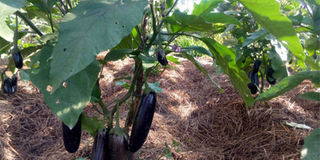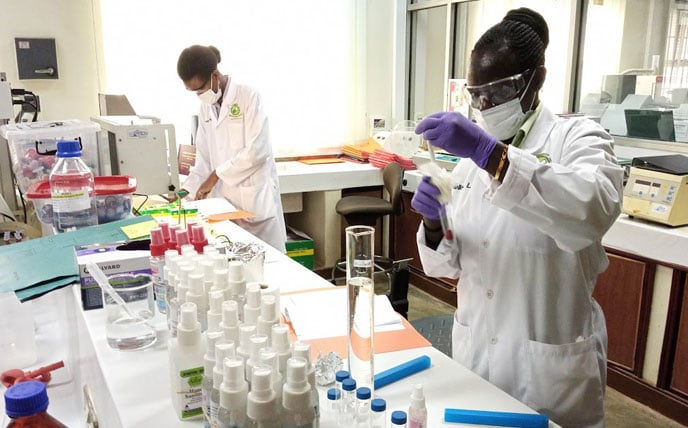Prime
How to grow and achieve three times bigger size in eggplants

Proper mulching will earn you bigger eggplants which fetch more income. FILE PHOTO
What you need to know:
- After about 75 days, the first harvest is ready, with some fruits being half a kilogramme. By the end of three months, each fruit can weigh 700g to one kilo. Although they do well in warm climates, eggplants can give 16 to 32 tonnes per acre in moderate climate.
By George Munene
With good agronomical practices, eggplant fruit farmers can grow and achieve thrice as big as the current size to harvest a total of at least 16 tonnes per acre in three months.
According to Obed Kamoni an agronomist at East Africa Seed Company, most eggplant fruits currently weigh from 100g to 300g, and though the eggplants look like fragile, they can tolerate adverse climate to give fruits of 700g to one kilogramme.
This can be achieved by following some of the best agronomical practices. A nursery bed for germination must be about one metre in width, but the length is unlimited. Soil should be raised and tiled into fine particles to increase chances of germination.
Soil in a one-metre by 10 metres nursery bed should have at least 50 kilogrammes of well decomposed manure.
Drills of about three centimetres are made before covering and irrigating then covering with mulch. The mulch should be removed before the seedlings emerge.
Transplanting
Seedlings are transplanted after a month, when they are pencil-thick at a spacing of 60cm by 90cm.
A teaspoonful of double ammonium phosphate fertiliser and a handful of farmyard manure are added to the 10cm deep transplantation hole.
Transplanting at the onset of rains is appropriate for farmers who do not have access to water for irrigation. Otherwise watering is necessary for high productivity. At least 4,500 seedlings are required for one acre.
Field management
Later, the seedlings have to be sprayed with a pesticide such as Vegimax mixed with Vacotine to kill cutworms, mites, whiteflies and other insects that can cut or mine the juice from the tender crops.
The pesticides should be applied after 14 days, although at times infestation can determine the frequency.
Mulching is key in cutting costs of irrigation. It retains the moisture in the soil while smothering weeds. Minimum tillage because of the mulch ensures that soil is least disturbed and the microbes inside work ‘peacefully’ to convert organic matter into ready nutrients for use.
Top-dress with calcium ammonium phosphate (CAN) after one month.
As the plants start flowering Swift or any other bee friendly insecticide must be applied; bees are important in pollination of the eggplants.
Swift insecticide also kills insects that drill holes into the fruits. Topaz should be sprayed on the crops to cushion them against cold weather.
Harvesting
After about 75 days, the first harvest is ready, with some fruits being half a kilogramme. By the end of three months, each fruit can weigh 700g to one kilo. Although they do well in warm climates, eggplants can give 16 to 32 tonnes per acre in moderate climate.
Market
They can be sold after 70 days when they are about 300g to until they attain maximum weight. The market will dictate the size to be harvested.




